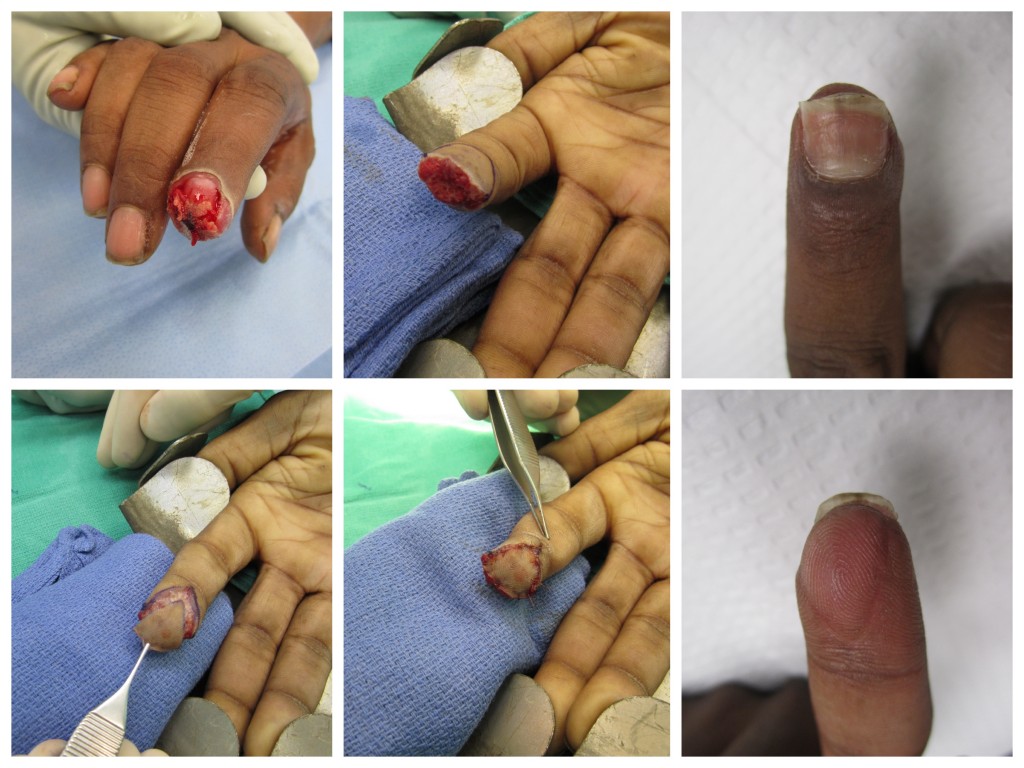An amputation is the partial or complete loss of a limb or digit. A finger amputation can result from an accidental injury, serious infection, or severe crush injury.
Some traumatic amputations can be reattached using microvascular techniques, known as “replantation.” The best candidates for replantation of a digit are children and healthy, non-smoking, young adults who are willing to undergo prolonged rehabilitation and possibly secondary surgeries. These procedures are performed in several major hospitals around the country which specialize in microvascular surgery. Digits which are crushed, contaminated, or badly damaged are not likely to function well after replantation. Therefore, many amputated fingers cannot be re-attached effectively. In any case, medical treatment should be sought immediately.
What can I expect during my recovery?
The fingers are critical for hand function. They are highly specialized parts of the body capable of a range between delicate and powerful tasks. The fingertip is responsible for providing a vast amount of sensory information to our brains. Therefore, it is not surprising that the recovery from a finger amputation can be difficult. Despite this fact, most patients with amputations return to their lives, finding different ways to adjust and adapt.
After an amputation, pain, swelling, and hand stiffness can be problems at first, but gradually improve with time. Scar sensitivity is common and can be improved with scar massage and hand therapy. Some people report an increase in symptoms during cold weather. Many people report “phantom limb sensation” which is a feeling that an amputated digit is still there. Sometimes this sensation can be painful, and it is called “phantom limb pain.” Some medications are available for nerve-related (neuropathic) pain. Gabapentin is a medication commonly used for this purpose.
It is normal to experience some symptoms of anxiety and/or depression after the loss of a digit or limb. People cope with this in different ways. Most of these feelings are temporary and improve with time. Most patients can return to more normal function several weeks after a finger amputation, but maximum improvement can take several months.
What can I do to improve my recovery?
Rest and elevation of the hand to the level of the heart is import for the first few days after an amputation to reduce swelling. Gentle range of motion of the uninvolved fingers and wrist will help prevent stiffness in the rest of the hand. Hand therapy can also be beneficial to decrease swelling and sensitivity and increase range of motion, strength, and function. Many fingertip amputations can heal without surgery, see wound care instructions here. Surgery may be needed to reconstruct the amputated finger in some cases, as in the pictures below.

What are the outcomes from an amputation?
Most people with finger amputations are able to return to work, sports, and hobbies after treatment. Recovery time varies among patients, depending on the type of amputation, possible complications, and pain tolerance of the patient. The most successful results are seen in patients who are highly motivated to return to their previous activities. In other words, a person’s attitude and motivation makes a big difference in their recovery and final outcome. My goal is to help each patient obtain the most function possible. Read my article about rock climber Tommy Caldwell here
